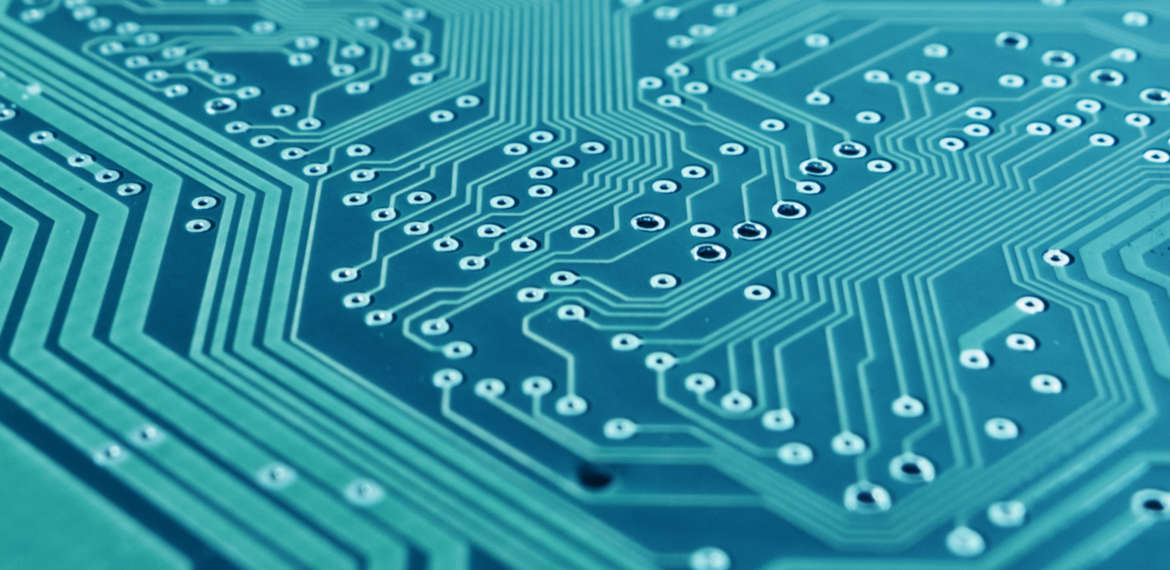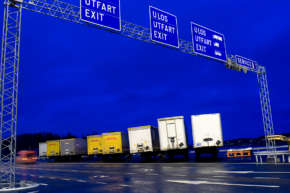Digitalisation will also change the future of ports
Automation, robotisation, artificial intelligence, and utilisation of data play an increasingly important role in all sectors of society. Digitalisation encompasses all of them and will also guide the operations of ports in the future. Finnish ports have already taken the first steps in the use of digitalisation, and new projects are in progress in many ports.

The current state and future scenarios of the digitalisation of ports were mapped out in the two-year DigiPort project that ended in September 2019. The goal of the project was to produce new information for ports to support decision-making related to digitalisation, and help the ports to find out how they could benefit from the increasing potential use of data and digital technologies in the future.
Location technologies enhance the transport chain
 ”Location and mobile technologies play an important role in enhancing logistics operations. Already now Traffic Management Finland (formerly Finnish Transport Agency) offers a comprehensive supply of information on transport routes and traffic, but the data flows are broken when entering the port area. Information on the location of cargo in the port area or warehouse sent directly to the mobile device of the driver coming to pick it up would make logistics operations more fluent, as unnecessary waiting and searching would be minimised. Checking of access pass at the port gate through automatic scanning of the vehicle register number already speeds up the transport chain and saves costs”, Reima Helminen, Senior Researcher at the Centre for Maritime Studies, says about the benefits of location technology.
”Location and mobile technologies play an important role in enhancing logistics operations. Already now Traffic Management Finland (formerly Finnish Transport Agency) offers a comprehensive supply of information on transport routes and traffic, but the data flows are broken when entering the port area. Information on the location of cargo in the port area or warehouse sent directly to the mobile device of the driver coming to pick it up would make logistics operations more fluent, as unnecessary waiting and searching would be minimised. Checking of access pass at the port gate through automatic scanning of the vehicle register number already speeds up the transport chain and saves costs”, Reima Helminen, Senior Researcher at the Centre for Maritime Studies, says about the benefits of location technology.
Internet of Things helps in avoiding disturbances
The Internet of Things (IoT) will connect most equipment and machine units to the internet. That will enable e.g. solutions for anticipatory servicing, as machines can by themselves report on signs indicating a malfunction. That way the personnel responsible for servicing can react to the data on time, and there will be no unnecessary interruptions in the use of machines and equipment. Products can also be updated online and equipment can be controlled over the internet.
”In the logistics sector IoT is already visibly present, and its use is increasing fast. Location equipment can be used to produce forecasts on arrival times, and they allow for the supervision and controlling of units moving in the port area as well as forming shared situation awareness between different actors in the port. For port operators and port administrators the Internet of Things means easy follow-up of e.g. the use and maintenance needs of forklifts, port cranes and quay structures”, Reima Helminen lists the places of use of IoT.
Digitalisation reduces emissions and improves safety
Increasing of digital functions in port operations usually cuts down the carbon dioxide emissions of the entire transport chain and improves both occupational safety and the protection of passengers and property. Both the utilisation of location technology and increasing use of automation and robotisation in load handling aim at reducing emissions. Energy consumption can also be affected e.g. through intelligent control of lighting.
”The SecurePax project, for example, aims at improving the safety of passenger traffic. The purpose of the project is to develop methods that will allow for better identification of passengers and ensure that no forbidden items are brought to the ship. To do that we study the available technologies, experiment on possible solutions, and evaluate their technical suitability and compliance with regulations on privacy protection. The best solutions and pilot technologies will be implemented in full in the new joint passenger terminal of the Port of Turku after the conclusion of the project. In addition to the Port of Turku, the project involves Viking Line and Tallink Silja”, says Markku Alahäme, Technical Director of Port of Turku Ltd.
Several digital projects underway in the Port of Turku
The Port of Turku is also otherwise in the frontline of putting digitalisation into use. In conjunction with the SecurePax project, the Port is starting a pilot for a 5G network in the port area together with the Turku University of Applied Sciences. The Port has also ordered an automooring system that will speed up the mooring and unmooring of vessels. That will enable decrease in fuel consumption and lower emissions as well as improving occupational safety.
“The automooring system will be installed on Viking Line’s berth by the end of 2020, and it will be used by both M/S Viking Grace and the new M/S Viking Glory which is currently under construction. Digital systems will also play an important role in the planned joint passenger terminal. The goals include, for instance, automated control of cars and trucks, which will make the traffic flow smoothly and safely”, Markku Alahäme says.

Text: Kari Ahonen
Photos: Markku Koivumäki
DigiPort project
The project was implemented by Kotka Maritime Research Centre; South-Eastern Finland University of Applied Sciences XAMK; University of Turku, Brahea Centre, Centre for Maritime Studies; and the Finnish Information Society Development Centre TIEKE. The funding came from the European Union’s Regional Development Fund and the pilot ports of the project, Port of Turku Ltd and the Port of HaminaKotka Ltd.

